To really make your character look alive, you're going to have to give it an expressive face. Anger, joy...there's no shortage of emotions!
- Home
- Expert advice
- Activities for kids: Playing with facial expressions
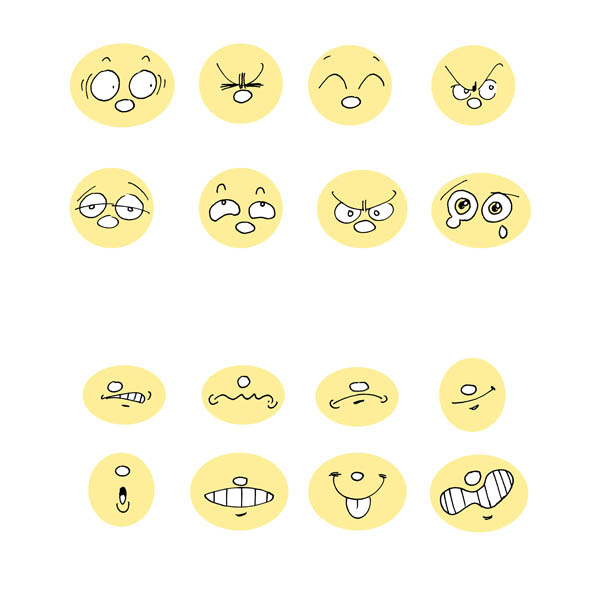
1. A few examples
- Playing with the eyes and mouth is the secret to creating a successful expression.
- Feel free to exaggerate the size and shape of the eyes and mouth to convey what your character is feeling.
- And don't forget the eyebrows, which as you can see are a vital part of the look!
Have fun playing around with different pairs of eyes and a variety of mouths. You'll quickly realise the myriad possible combinations at your disposal...
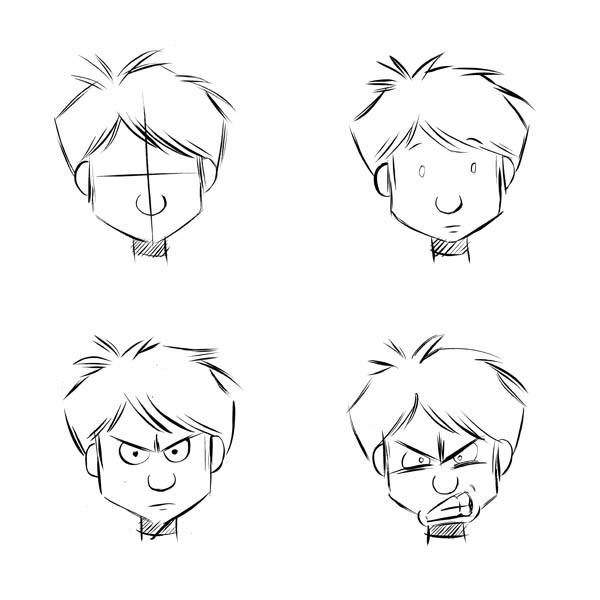
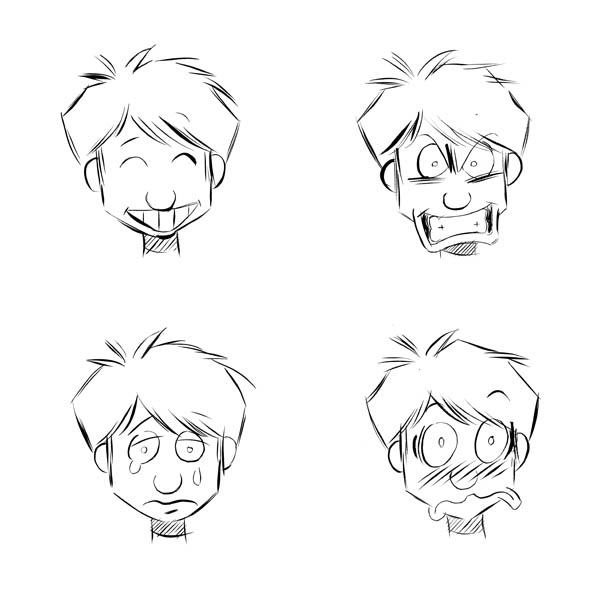
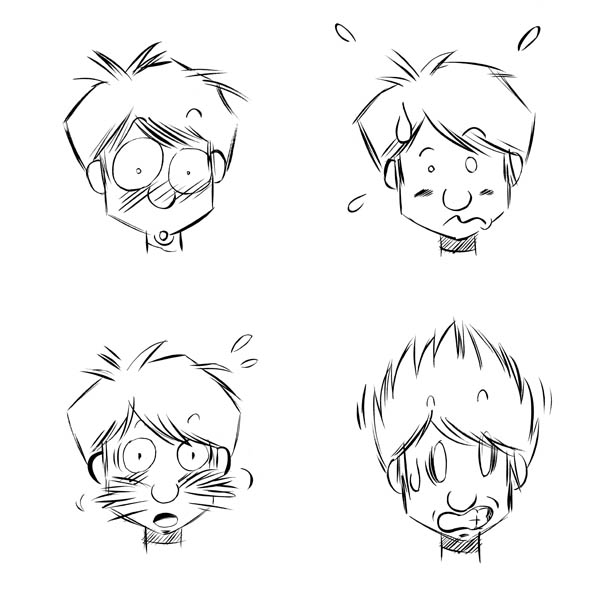
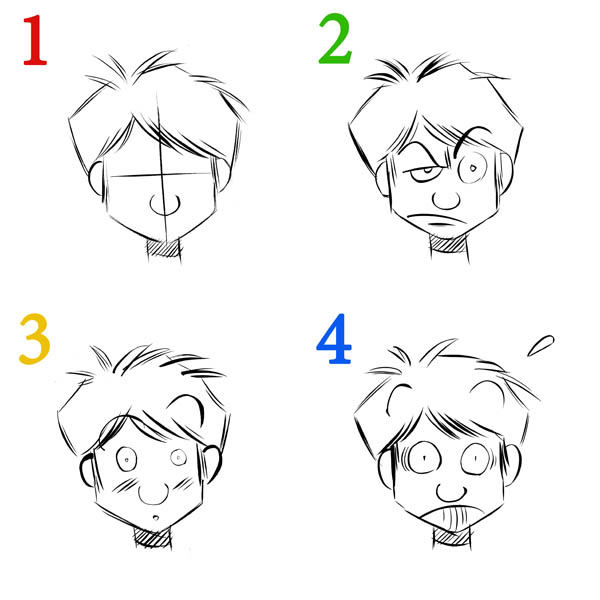
2. Drawing anger
- Draw a face as simply as possible: make a cross in the middle to be sure you properly line up the eyes, nose and mouth. For the moment, your face has no expression.
- To make it angry, simply exaggerate the lines of the eyes and mouth bit by bit.
3. Exaggerating your character's expression
Here are some tips for bringing out your character's feelings
- Make the eyes or mouth bulge out You mustn't feel confined to the boundaries of the face - quite the contrary, the expression on your character's face will only stand out that much more.
- Use hatches to portray confusion, and drops of sweat on or off the face to express discomfort, surprise or even fear.
- Play around with the "flexible" parts of the face. You can convey surprise or fear with a pair of whiskers or some hair that stands on end!
4. Experiment with the nuances of the expression
The rest of the expression must of course be logical and coherent. Practice moving gradually from one emotion to another: for example, your character can go from having a doubtful expression to one of amazement and finally one of outright surprise!

5. It's your turn!
Print or use this image as inspiration to complete the missing expressions with your own personal style.
- Remember that the feelings you portray on the face of your character must follow one another in a logical fashion (candid laughter should not be followed by rage, for example).
- If you are unsure, look in the mirror with the expression you wish to portray, and a sheet of paper within arm's reach.
A little anecdote: Bill Watterson, the cartoonist of the extremely expressive Calvin et Hobbes, couldn't believe he was getting paid to spend his days making faces in front of the bathroom mirror to draw Calvin.
Recommended product:
White drawing paper
Explore more tutorials on this technique
For kids
Making an Easter bunny
For kids
Make a present for Mother's Day
For kids
Create a paper pencil pot
For kids
Create masks
For kids
Make a Valentine's Day Gift
For kids
Create corrugated cardboard totems
For kids
Make expressive faces out of paper
For kids
Make a corrugated cardboard parrot
For kids
Create a paper mandala
For kids
Making a paper hot-air balloon
For kids
Make a 3D paper landscape
For kids
Make 3D toys out of paper
For kids
Make a paper mâché globe
For kids
Create a garland for April Fools Day
For kids
Make a silhouette card
For kids
Making corrugated cardboard arrows
For kids
Make a chronological frieze
For kids
Make a paper cactus
For kids
Drawing a Horse
For kids
Making a secret egg box from card
For kids
Drawing a boat
For kids
Create a four seasons picture
For kids
Create a botanical book
For kids
Create a star mosaic
For kids
Create a beautiful glittering star
For kids
Making a snowflake
For kids
Create a shape memory game
For kids
Drawing a Happy Dolphin
For kids
Drawing a Playful Dolphin
For kids
Drawing a Knight on Horseback
For kids
Drawing a Griffin
For kids
Drawing children
For kids
Drawing a Penguin
For kids
Drawing a Horse and Cart
For kids
Draw a soldier
For kids
Drawing a Foal
For kids
Drawing a turtle
For kids
How to make ladybirds
For kids
Drawing a castle
For kids
Set off to discover modern history
For kids
Create a pop-up card
For kids
Activities for kids: Drawing a horse
For kids
Activities for kids: Drawing a cat
For kids
Activities for kids: Graffiti
For kids
Activities for kids: Drawing a hand
For kids
Your children's graphic development
For kids
Playing with one's children
For kids
Drawing a Dragon
